Vibrations induced by simultaneous scans of the translation stage and of the slip-ring
Table of Contents
1 Measurement description
Setup: All the stages are OFF except the translation stage and the Slip-Ring.
Each of the signal is amplified by voltage amplifiers with the following settings:
- Gain: 40dB
- AC/DC option: AC
- Low pass filter: 1kHz
The slip-ring is rotating at 60rpm. At the same time, scans with the translation stage are done at 1Hz with an amplitude of 600000cnt (= 3mm).
Two geophones are used to measure the motion in the vertical direction of the marble and of the sample.
Goal:
- The goal is to estimate the vibrations induced by the simultaneous scans of the spindle (here the slip-ring is used as the spindle is not fully functional yet) and of the translation stage
Measurements:
Three measurements are done:
| Measurement File | Description |
|---|---|
mat/data_050.mat |
Slip-Ring at 1Hz, Ty OFF |
mat/data_051.mat |
Slip-Ring at 1Hz, Ty ON (The current and cnt error of Ty is also registered) |
mat/data_052.mat |
Slip-Ring at 1Hz, Ty 1Hz 600000cnt |
Each of the measurement mat file contains one data array with 3 columns:
| Column number | Description |
|---|---|
| 1 | Geophone on the marble |
| 2 | Geophone at the sample location |
| 3 | Time |
2 Data Analysis
All the files (data and Matlab scripts) are accessible here.
2.1 Load data
ty_of = load('mat/data_050.mat', 'data'); ty_of = ty_of.data; ty_on = load('mat/data_051.mat', 'data'); ty_on = ty_on.data; ty_1h = load('mat/data_052.mat', 'data'); ty_1h = ty_1h.data;
2.2 Voltage to Velocity
We convert the measured voltage to velocity using the function voltageToVelocityL22 (accessible here).
gain = 40; % [dB] ty_of(:, 1) = voltageToVelocityL22(ty_of(:, 1), ty_of(:, 3), gain); ty_on(:, 1) = voltageToVelocityL22(ty_on(:, 1), ty_on(:, 3), gain); ty_1h(:, 1) = voltageToVelocityL22(ty_1h(:, 1), ty_1h(:, 3), gain); ty_of(:, 2) = voltageToVelocityL22(ty_of(:, 2), ty_of(:, 3), gain); ty_on(:, 2) = voltageToVelocityL22(ty_on(:, 2), ty_on(:, 3), gain); ty_1h(:, 2) = voltageToVelocityL22(ty_1h(:, 2), ty_1h(:, 3), gain);
2.3 Time domain plots
We plot the measured velocity of the marble (figure 1), sample (figure 2) and the relative velocity of the sample with respect to the marble (figure 3).
We also integrate the relative velocity to obtain the relative displacement (figure 4).
figure; hold on; plot(ty_1h(:, 3), ty_1h(:, 1), 'DisplayName', 'Marble - Ty 1Hz'); plot(ty_on(:, 3), ty_on(:, 1), 'DisplayName', 'Marble - Ty ON'); plot(ty_of(:, 3), ty_of(:, 1), 'DisplayName', 'Marble - Ty OFF'); hold off; xlabel('Time [s]'); ylabel('Velocity [m/s]'); xlim([0, 2]); legend('Location', 'southwest');
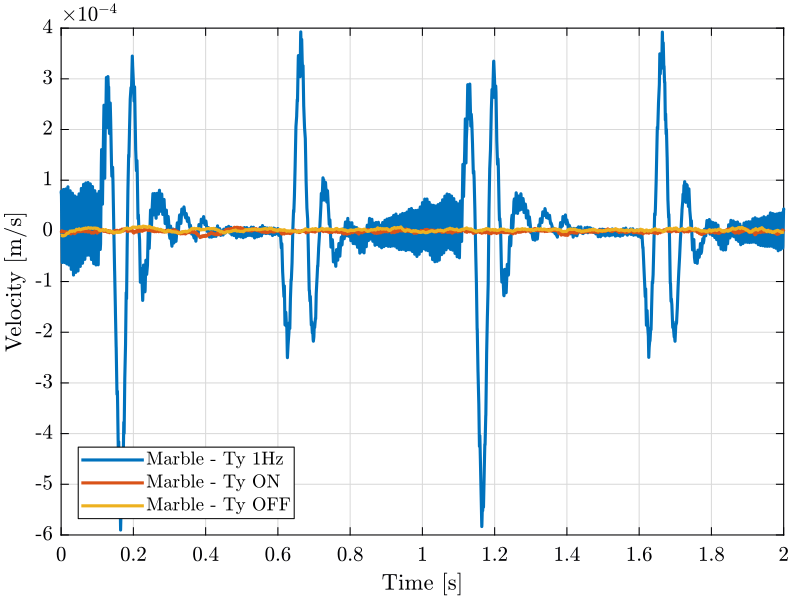
Figure 1: Velocity of the marble in the vertical direction
figure; hold on; plot(ty_1h(:, 3), ty_1h(:, 2), 'DisplayName', 'Sample - Ty - 1Hz'); plot(ty_on(:, 3), ty_on(:, 2), 'DisplayName', 'Sample - Ty - ON'); plot(ty_of(:, 3), ty_of(:, 2), 'DisplayName', 'Sample - Ty - OFF'); hold off; xlabel('Time [s]'); ylabel('Velocity [m/s]'); xlim([0, 2]); legend('Location', 'southwest');
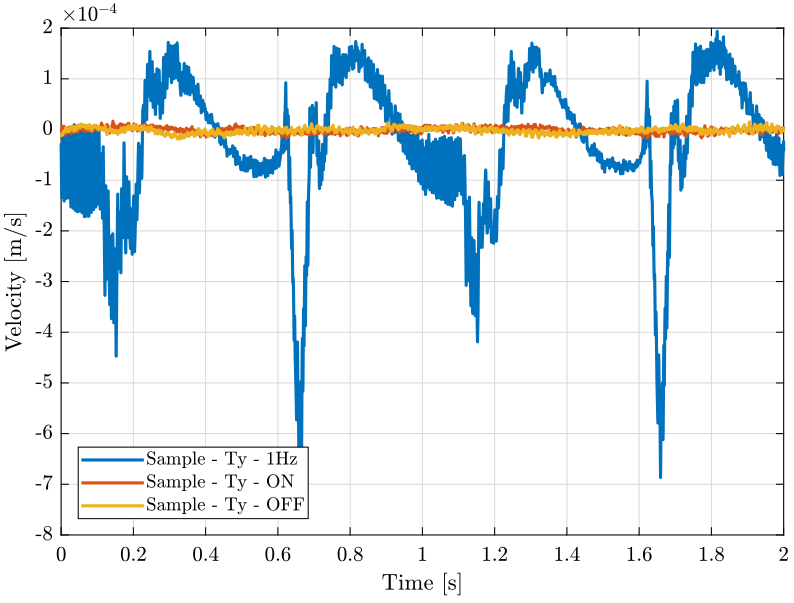
Figure 2: Velocity of the sample in the vertical direction
figure; hold on; plot(ty_1h(:, 3), ty_1h(:, 2)-ty_1h(:, 1), 'DisplayName', 'Relative Velocity - Ty - 1Hz'); plot(ty_on(:, 3), ty_on(:, 2)-ty_on(:, 1), 'DisplayName', 'Relative Velocity - Ty - ON'); plot(ty_of(:, 3), ty_of(:, 2)-ty_of(:, 1), 'DisplayName', 'Relative Velocity - Ty - OFF'); hold off; xlabel('Time [s]'); ylabel('Velocity [m/s]'); xlim([0, 2]); legend('Location', 'southwest');
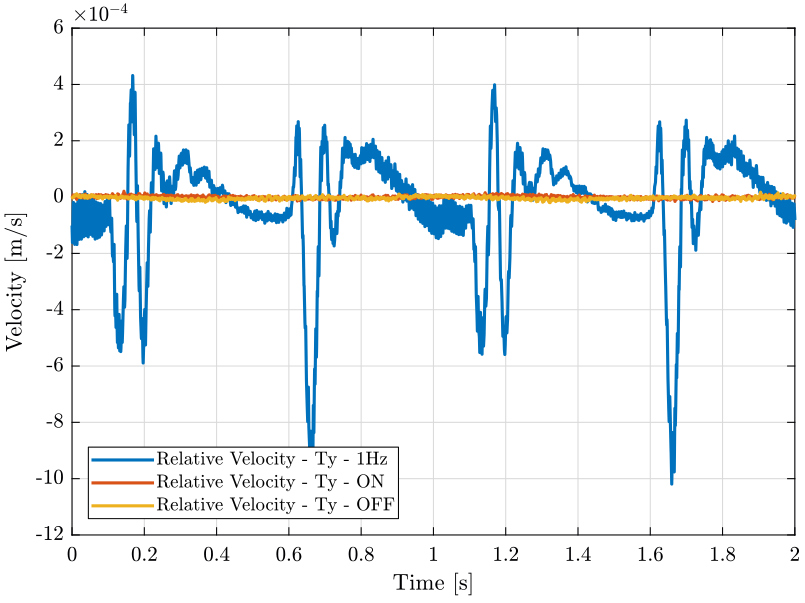
Figure 3: Relative velocity of the sample with respect to the marble
figure; hold on; plot(ty_1h(:, 3), lsim(1/s, ty_1h(:, 2)-ty_1h(:, 1), ty_1h(:, 3)), 'DisplayName', 'Relative Displacement- Ty - 1Hz'); plot(ty_on(:, 3), lsim(1/s, ty_on(:, 2)-ty_on(:, 1), ty_on(:, 3)), 'DisplayName', 'Relative Displacement- Ty - ON'); plot(ty_of(:, 3), lsim(1/s, ty_of(:, 2)-ty_of(:, 1), ty_of(:, 3)), 'DisplayName', 'Relative Displacement- Ty - OFF'); hold off; xlabel('Time [s]'); ylabel('Displacement [m]'); xlim([0, 2]); legend('Location', 'southwest');
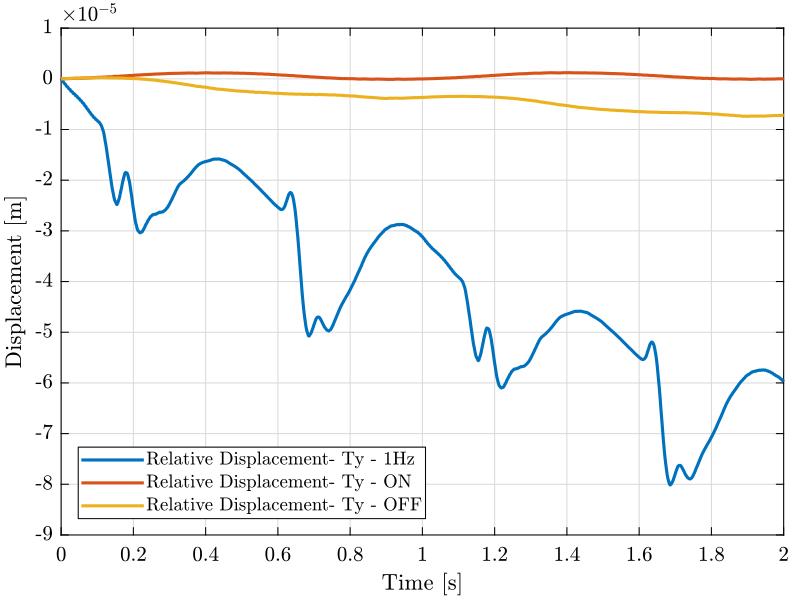
Figure 4: Relative Displacement of the sample with respect to the marble
2.4 Frequency Domain
We first compute some parameters that will be used for the PSD computation.
dt = ty_of(2, 3)-ty_of(1, 3); Fs = 1/dt; % [Hz] win = hanning(ceil(10*Fs));
Then we compute the Power Spectral Density using pwelch function.
First for the geophone located on the marble
[pxof_m, f] = pwelch(ty_of(:, 1), win, [], [], Fs); [pxon_m, ~] = pwelch(ty_on(:, 1), win, [], [], Fs); [px1h_m, ~] = pwelch(ty_1h(:, 1), win, [], [], Fs);
And for the geophone located at the sample position.
[pxof_s, f] = pwelch(ty_of(:, 2), win, [], [], Fs); [pxon_s, ~] = pwelch(ty_on(:, 2), win, [], [], Fs); [px1h_s, ~] = pwelch(ty_1h(:, 2), win, [], [], Fs);
Finally, for the relative velocity.
[pxof_r, f] = pwelch(ty_of(:, 2)-ty_of(:, 1), win, [], [], Fs); [pxon_r, ~] = pwelch(ty_on(:, 2)-ty_on(:, 1), win, [], [], Fs); [px1h_r, ~] = pwelch(ty_1h(:, 2)-ty_1h(:, 1), win, [], [], Fs);
And we plot the ASD of the measured velocities:
- figure 5 for the geophone located on the marble
- figure 6 for the geophone at the sample position
- figure 7 for the relative velocity
figure; hold on; plot(f, sqrt(px1h_m), 'DisplayName', 'Marble - Ty 1Hz'); plot(f, sqrt(pxon_m), 'DisplayName', 'Marble - Ty ON'); plot(f, sqrt(pxof_m), 'DisplayName', 'Marble - Ty OFF'); hold off; set(gca, 'xscale', 'log'); set(gca, 'yscale', 'log'); xlabel('Frequency [Hz]'); ylabel('ASD of the measured velocity $\left[\frac{m/s}{\sqrt{Hz}}\right]$') legend('Location', 'southwest'); xlim([1, 500]);
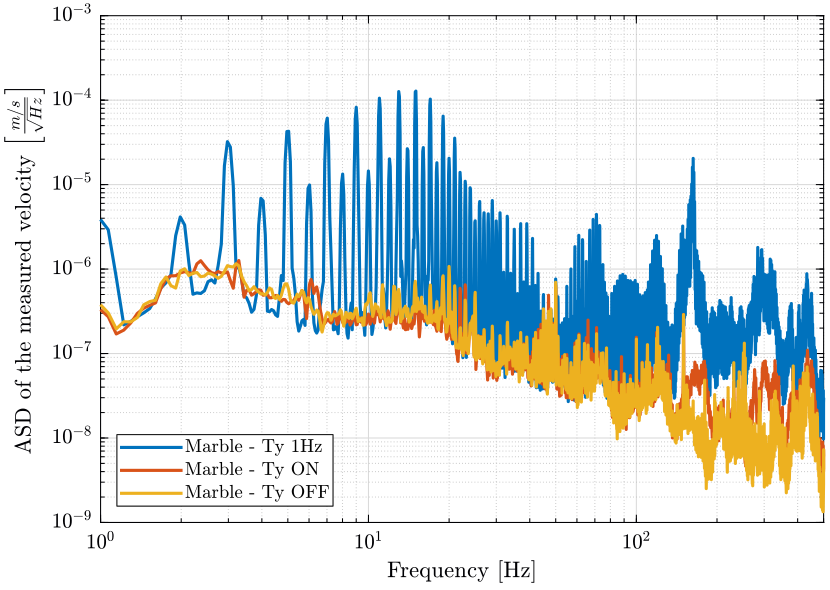
Figure 5: Comparison of the ASD of the measured velocities from the Geophone on the marble
figure; hold on; plot(f, sqrt(px1h_s), 'DisplayName', 'Sample - Ty 1Hz'); plot(f, sqrt(pxon_s), 'DisplayName', 'Sample - Ty ON'); plot(f, sqrt(pxof_s), 'DisplayName', 'Sample - Ty OFF'); hold off; set(gca, 'xscale', 'log'); set(gca, 'yscale', 'log'); xlabel('Frequency [Hz]'); ylabel('ASD of the measured velocity $\left[\frac{m/s}{\sqrt{Hz}}\right]$') legend('Location', 'southwest'); xlim([1, 500]);

Figure 6: Comparison of the ASD of the measured velocities from the Geophone at the sample location
figure; hold on; plot(f, sqrt(px1h_r), 'DisplayName', 'Relative - Ty 1Hz'); plot(f, sqrt(pxon_r), 'DisplayName', 'Relative - Ty ON'); plot(f, sqrt(pxof_r), 'DisplayName', 'Relative - Ty OFF'); hold off; set(gca, 'xscale', 'log'); set(gca, 'yscale', 'log'); xlabel('Frequency [Hz]'); ylabel('ASD of the measured velocity $\left[\frac{m/s}{\sqrt{Hz}}\right]$') legend('Location', 'southwest'); xlim([1, 500]);
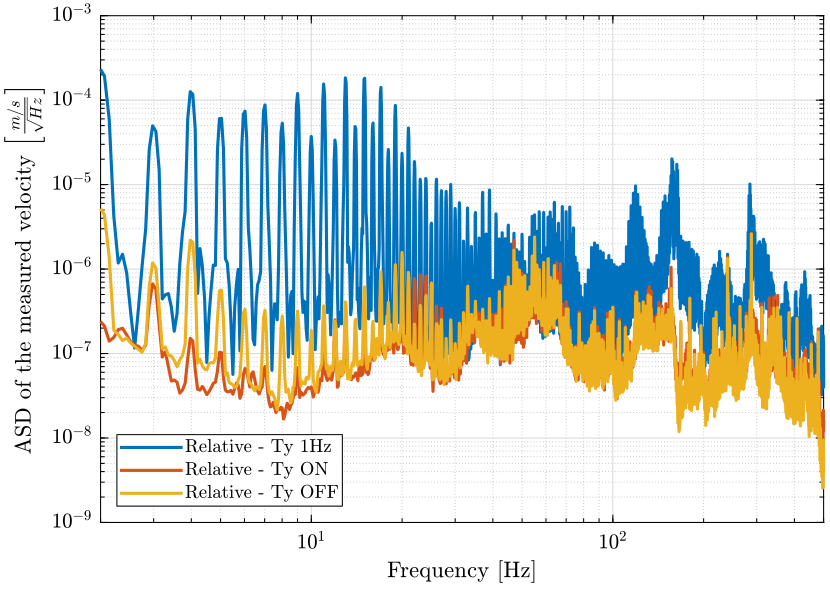
Figure 7: Comparison of the ASD of the relative velocity
2.5 Ty motion and current
The position of the translation stage and current flowing in its actuator are measured using the elmo software and saved as an csv file.
2.5.1 Data pre-processing
Let’s look at at the start of the csv file.
sed -n 1,30p mat/Ty-when-Rz-1Hz-and-Ty-1Hz.csv | nl -ba -
1 Elmo txt chart ver 2.0 2 3 [File Properties] 4 Creation Time,2019-05-13 05:33:43 5 Last Updated,2019-05-13 05:33:43 6 Resolution,0.001 7 Sampling Time,5E-05 8 Recording Time,5.461 9 10 [Chart Properties] 11 No.,Name,X Linear,X No. 12 1,Chart #1,True,0 13 2,Chart #2,True,0 14 15 [Chart Data] 16 Display No.,X No.,Y No.,X Unit,Y Unit,Color,Style,Width 17 1,1,2,sec,N/A,ff0000ff,Solid,TwoPoint 18 2,1,3,sec,N/A,ff0000ff,Solid,TwoPoint 19 2,1,4,sec,N/A,ff007f00,Solid,TwoPoint 20 21 [Signal Names] 22 1,Time (sec) 23 2,Position [cnt] 24 3,Current Command [A] 25 4,Total Current Command [A] 26 27 [Signals Data Group 1] 28 1,2,3,4, 29 0,-141044,-0.537239575086517,-0.537239575086517, 30 0.001,-143127,-0.530803752974691,-0.530803752974691,
The real data starts at line 29.
We then load this cvs file starting at line 29.
tye_on = csvread("mat/Ty-when-Rz-1Hz.csv", 29, 0); tye_1h = csvread("mat/Ty-when-Rz-1Hz-and-Ty-1Hz.csv", 29, 0);
2.5.2 Time domain data
We plot the position of the translation stage measured by the encoders.
There is 200000 encoder count for each mm, we then divide by 200000 to obtain mm.
The result is shown on figure 8.
figure; subplot(1, 2, 1); plot(tye_on(:, 1), (tye_on(:, 2)-mean(tye_on(:, 2)))/200000); xlim([0, 5]); xlabel('Time [s]'); ylabel('Position [mm]'); legend({'Ty - ON'}, 'Location', 'northeast'); subplot(1, 2, 2); plot(tye_1h(:, 1), (tye_1h(:, 2)-mean(tye_1h(:, 2)))/200000); xlim([0, 5]); xlabel('Time [s]'); ylabel('Position [mm]'); legend({'Ty - 1Hz'}, 'Location', 'northeast');
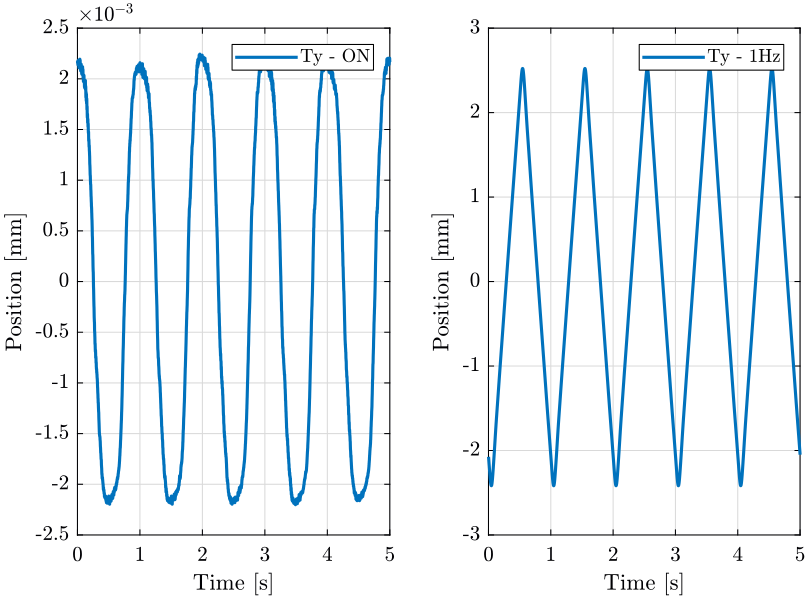
Figure 8: Y position of the translation stage measured by the encoders
We also plot the current as function of the time on figure 9.
figure; subplot(1, 2, 1); plot(tye_on(:, 1), tye_on(:, 3)-mean(tye_on(:, 3))); xlim([0, 5]); xlabel('Time [s]'); ylabel('Current [A]'); legend({'Ty - ON'}, 'Location', 'northeast'); subplot(1, 2, 2); plot(tye_1h(:, 1), tye_1h(:, 3)-mean(tye_1h(:, 3))); xlim([0, 5]); xlabel('Time [s]'); ylabel('Current [A]'); legend({'Ty - 1Hz'}, 'Location', 'northeast');
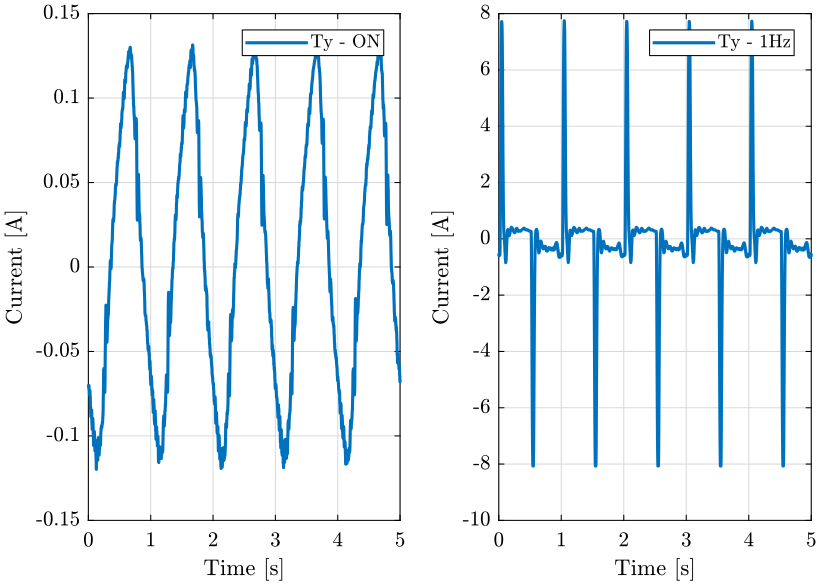
Figure 9: Current going through the actuator of the translation stage